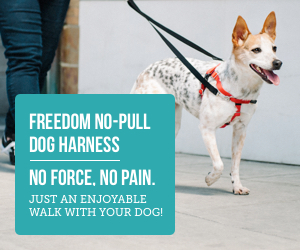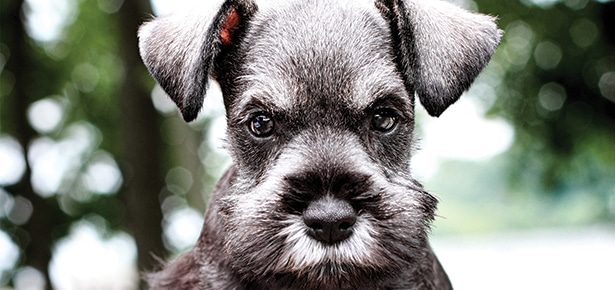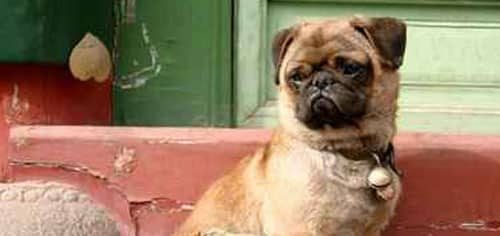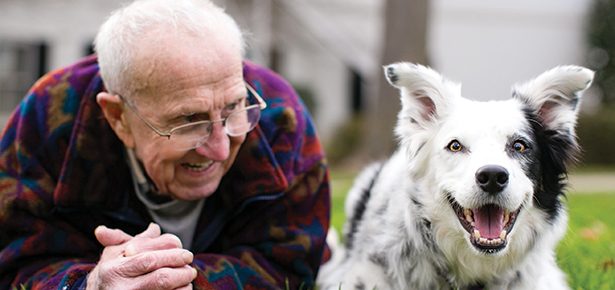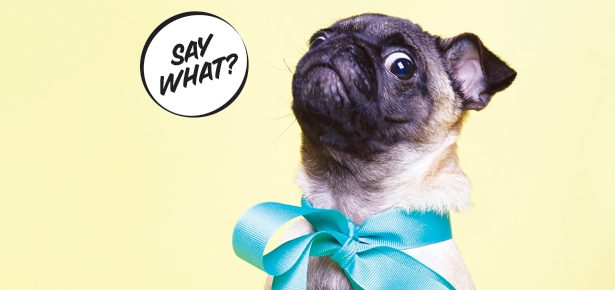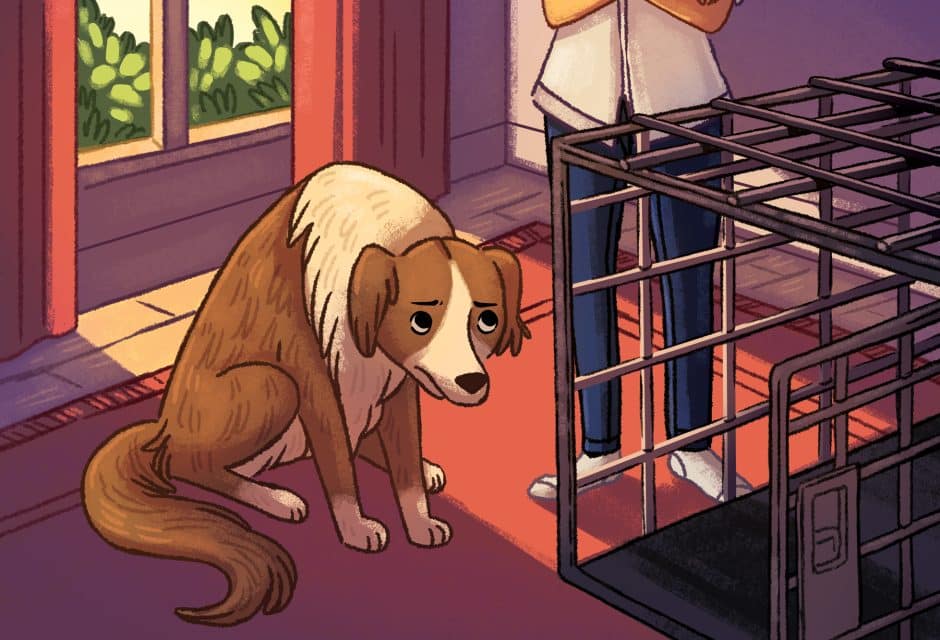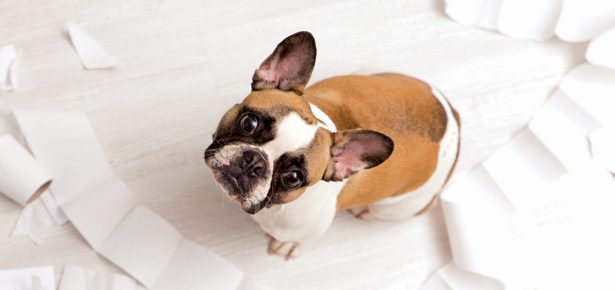
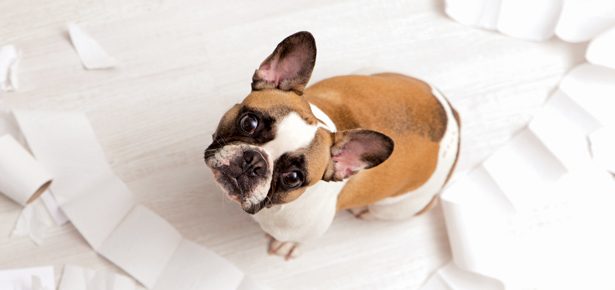
Top 9 Common Dog Training Mistakes
Are YOU the problem? These common responses to problem canine behaviours are confusing your dog or, worse yet, encouraging the very behaviour you’re trying to avoid
Are YOU Making These Common Dog Training Mistakes?
“She doesn’t listen to us. We’re so frustrated!” the woman said as I walked in the door. “That’s why we called a dog trainer.” It’s true the little Goldendoodle was all over the map. Tell her to sit and she would, but in two seconds she’d jump up and dash off. Sometimes instead of sitting, she would lie down.
“What’s your release cue? The word you use to tell Fidget it’s ok for her to get up from sitting?” I asked.
“I use ‘Come,’ the husband replied.
“You use ‘Come’? I asked. “Then what do you use when you want Fidget to come to you?”
“We use ‘Come,’ the woman answered, as she put a leash on her bouncy dog. “Come on, Fidget” she told her dog as she started walking towards me.
“Wait,” I said, “What words are you using to tell her to walk with you?”
“Come on” both husband and wife chimed in unison.
At this point, I was totally confused. Three “Come” cues all meaning something different. No wonder Fidget was not responding well—she was as confused as I was!
Not using clear, consistent cues is a common mistake people make when training their dogs. One word can’t have multiple meanings—how is your dog supposed to know which meaning applies? Watch out for these other common mistakes:
Problem: Housetraining Woes
Common Dog Training Mistake #1: Leaving a puppy unsupervised—even for a minute
Everyone underestimates how much supervision a puppy needs, especially when it comes to housetraining. Consequences for behaviour need to be delivered within one second of the action. If your puppy pees and poops outside, you need to give him praise and a treat immediately. If he pees or poops inside, you need to give him a verbal reprimand and rush him outside to hopefully finish. If you’re not there to immediately let him know you’re unhappy with his action, you’re too late.
Taking a phone call, getting caught up in a TV program, being on your phone or computer—all these things take your attention away from a puppy long enough for him to eliminate. “I turned my back for just a few seconds” is a common mistake that will stall your housetraining progress.
If you can’t supervise your puppy closely, then confine him.
This also applies to an adult dog. Just because a dog was “housetrained” in one house, doesn’t mean he will apply it to your house. If you are bringing home an adult dog, then keep a close eye on him until you can train him where to go to the bathroom.
Common Dog Training Mistake #2 (no pun intended): Giving your puppy too much space
If you’re hesitant to crate train your puppy, you may have a greater challenge in housetraining. Puppies typically do not want to pee or poop in confinement. If you put a puppy in a room that’s blocked off by a baby gate, there’s still plenty of room for that puppy to pee and poop with little consequence.
The goal is always to graduate a puppy out of his crate so he’s safely loose in your home. But confinement training done correctly is a tool that can significantly help with your housetraining efforts.
Problem: Pulling on Leash
Common Dog Training Mistake: Giving your dog a paycheck for pulling
The laws of learning: behaviour that is rewarded is repeated. I’m sure you’re thinking to yourself, reward pulling? Me? Never! But do you? If your dog drags you out the front door to the grass and pees, you just rewarded him for pulling. If your dog pulls you to get inside the dog park to play with his canine buddies, a huge paycheck, you’ve just rewarded pulling. Any time your dog pulls you on the leash to get something he wants, you’re inadvertently rewarding pulling behaviour. Instead, teach your dog that a loose leash pays better.
“Consequences for behaviour need to be delivered within one second of the action.”
Problem: Jumping
Common Dog Training Mistake #1: Giving your dog a reward (i.e. any type of attention) for jumping
If you ever pet your dog when his front paws are on you, you’re teaching him that jumping on people is ok. So if your dog jumps on you to stretch, and you think it’s adorable and ruffle his ears, you just paid him for jumping.
If your bouncy Labrador jumps on you and you push him off, you just rewarded him. Most sporting breeds love physical attention, so to your dog, pushing is a fun game. Any attention at all can be a reward. This doesn’t mean you should just ignore your dog jumping on you. With a little dog it may not be a big deal, but a big dog can knock you down. Instead of rewarding jumping, teach your dog that he needs to sit before anyone pets him, including you.
Common Dog Training Mistake #2: letting your dog greet guests unleashed
Yelling at your dog over and over to stop jumping isn’t effective. Put your dog on a leash and hold onto him when guests arrive. Don’t let guests pet him unless he sits. If you keep hold of him, he can be a jumping bean all he wants, but he won’t be able to make contact with your company.
Problem: Not Coming When Called
Common Dog Training Mistake #1: Punishing your dog for coming to you
“FIDO! Get over here!” you scream, glaring at your chewed computer cord. Your dog slinks over and you yell at him, pointing at the cord. Are you teaching your dog to never chew on cords? Nope. You’re teaching him not to come to you.
Coming to you always needs to be positive. Otherwise, your dog may start running away from you when you call him. (Remember, if you don’t catch your dog in the act of doing something wrong, your reprimand is too late.)
Common Dog Training Mistake #2: Adding challenges too soon
Generally, you teach your dog to come while he’s on a regular leash. Once he’s good at this, then you switch to a long line, then gradually work to off leash. Instead, many go from a short leash to off leash way too soon. The result? A dog that doesn’t come because there are too many distractions. Take your time and gradually add distractions to your training to build a solid foundation for your recall.
Other Issues
Hoping bad behavior will just go away on its own
Wishful thinking doesn’t make bad behaviour go away. A dog that is starting to growl now can be a dog that bites. (Address the cause of the growling, but don’t discourage the growling itself. The last thing you want is a dog that bites without warning.) A dog that is peeing in the house now will be a housetraining nightmare forever unless you train him. It’s much easier to fix a new, small problem than an ingrained, big one. Don’t wait.
Choosing the wrong trainer
The dog training industry is unregulated. There are no exams or standards to meet before someone can claim to be a trainer. Not just anyone can help you train your dog safely and effectively. Putting your canine companion in the wrong hands could make problem behaviours much worse. Choose a trainer for your dog like you would choose a pediatrician for your child. Look for someone who has experience in modern, positive, science-based techniques, who attends continuing education. Be picky. Your furry friend is worth it!
Share this with a friend who might be making the same common dog training mistakes!
Join the newsletter and never miss out on dog content again!
"*" indicates required fields
By clicking the arrow, you agree to our web Terms of Use and Privacy & Cookie Policy. Easy unsubscribe links are provided in every email.
